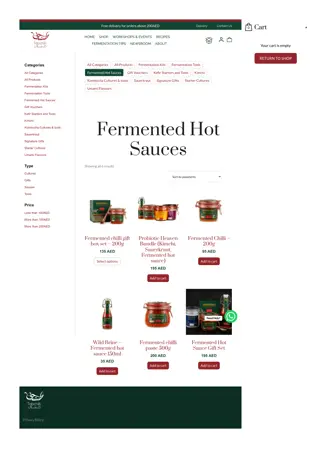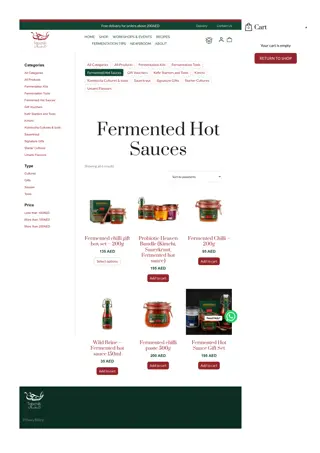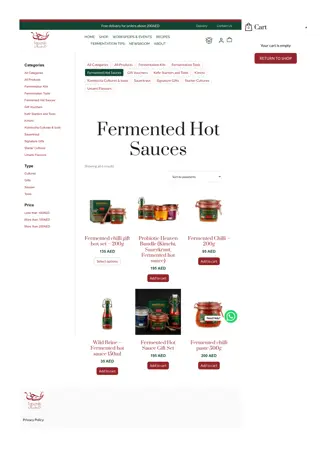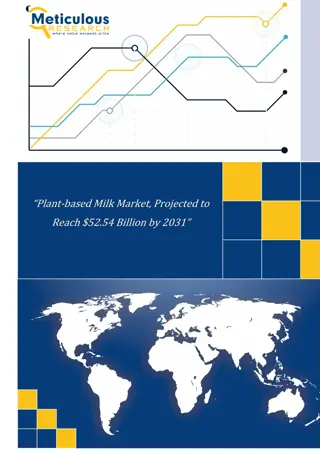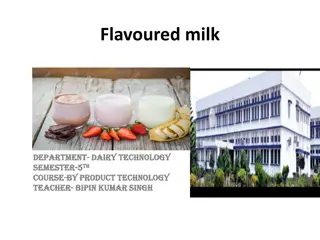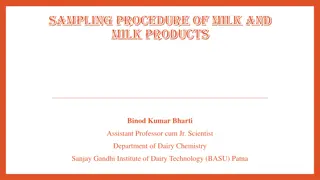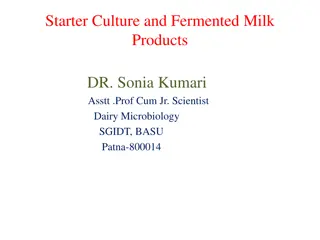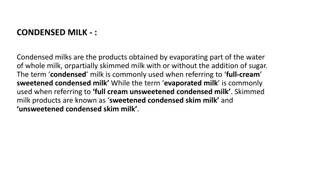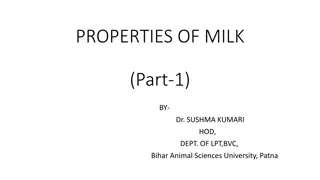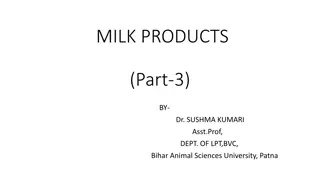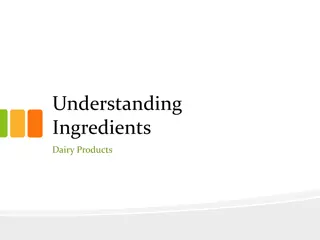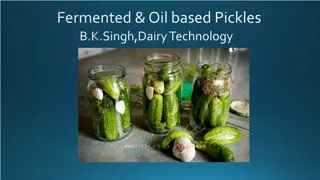Strategies for Starter Culture Propagation in Fermented Milk Products
Explore the methodologies like mechanically and chemically protected systems, Lewis system, and Alfa-Laval system for ensuring pure and active starter cultures free from contamination in the production of fermented milk products. Learn about Phage Resistant Medium/Phage Inhibitory Medium and the importance of chelating agents in media preparation.
Download Presentation

Please find below an Image/Link to download the presentation.
The content on the website is provided AS IS for your information and personal use only. It may not be sold, licensed, or shared on other websites without obtaining consent from the author. Download presentation by click this link. If you encounter any issues during the download, it is possible that the publisher has removed the file from their server.
E N D
Presentation Transcript
Starter Culture and Fermented Milk Products DR. Sonia Kumari Asstt .Prof Cum Jr. Scientist Dairy Microbiology SGIDT, BASU Patna-800014
Mechanically and Chemically Protected Systems for Starter Propagation
Production system for Bulk starter cultures: Aimed to produce a pure active culture free from contamination especially from bacteriophages. It uses Simple Microbiological technique. Employment of mechanically protected equipment. Propagation in Phage Resistant medium/Phage Inhibitory Medium (PRM/PIM)
MECHANICALLY AND CHEMICALY PROTECTED SYSTEMS Mechanically protected Equipment: Two things should be kept in mind. Growth medium should be heated and cooled at incubation temperature in a completely closed vat. Inoculation of the starter should be done only in a complete safe and sterilize place where there is a complete control of entry of contaminated external air.
Lewis System : The system involves the use of a two way hypodermic needle system to carry out the transfer of stock cultures to mother culture, mother to feeder and then feeder to bulk starter. All inoculations take place through a barrier of chlorinated water. Re-usable and collapsible polythene bottles are used at each stage. The bottles are fitted with Astell rubber seals and a screwcap.
Alfa-Laval System The principle is similar to the Lewis System but the tank is of different design. Sterilized air is used instead of squeezing. Two types of needles are used. Short needle are used for sending sterilized air in and to force the culture through long needle to next container.
Propagation in Phage Resistant Medium/Phage Inhibitory Medium (PRM/PIM) This medium is used mostly for mesophilic starter cultures ingredients like milk-solids, sugar, stimulatory compound (yeast extract, pancreatic extract), phosphate citrate buffer, chelating agents (ammonium or sodium phosphate) is used for media preparation. The chelating agents bind with Ca++ and Mg++ as these ions are required by the bacteriophage during the proliferation and replication. The bacteriophage also requires these ions for the phage adsorption onto the bacterial cell.
STARTER SYSTEMS Bulk Set : In this system the supplier provides the user with a small amount of culture which is then fermented to the user through one or two stages to produce a volume of bulk starter. Typically fermentation takes place at 22-260C for 14-16 hr for Mesosphilic and at 430C for 4.5 to 5 hr for Themophilic starter. A significant portion of this time is taken up by the lag phase as cells repair themselves from their storage mode. This starter then may be used immediately by inoculating into production milk (1% for cheddar, 3% for yoghurt).
Direct Vat Inoculation : This is made available in more concentrated form in large volumes such that the product can be inoculated directly into the production milk. In both cases inoculation into pasteurized medium ensures an active starter dominating the fermentation.
MAIN OPERATING METHODS The main starter operating systems for controlling the bacteriophages are : Rotational Non-rotation Dutch P/L system
Rotational Regular change of a culture would prevent the build-up of a bacteiophage and thus avoid starter failure. Traditionally this is the method of choice. Different culture is used for each fill of the vat and the same culture could not be reintroduced for 5 days or for one production week. The effectiveness of the system can be improved by regular monitoring of phage to ensure any attack by them and to made starter effective and active.
Non-Rotational Originally developed in New Zealand. This is based on the identification of single strain phage resistant bacteria. Individual strains are introduced into the plant normally as blend of three, where they are used continuously. Regular testing is done to monitor the development of phage against any of the strains. When the phage levels are likely to affect acid production, the strain is removed and replaced by a suitable alternative. This systems required maintenance of high hygiene and production discipline. Such systems reported to do outstanding in terms of elimination of bacteriophage problem. But it required trained and a strict good plant hygienic system.
Dutch P/L system : This system work on the principal of development of phage resistant starter mixture. Mixed cultures are transferred in an environment and deliberately exposed with bacteriophage. The resulting mix of cultures may include new phage resistant mutants and this will help to operate satisfactorily in the production environment. But the method required high skilled microbiologists/Scientist and staff on site to mange the system.
EFFECTIVE STARTER SYSTEM MUST SATISFY FOLLOWING CRITERIA: Clear cut objectives in the plant. Physical as well as Human constraints must be dealt with. All involved staff should understands the system and the requirement of Starter. All staff should understand the bacteriophage, its seriousness and the knowledge to protect them. Proper movements of air, water, Potential check on people for as a channel for phage attack. Following HACCP. Strict hygiene and production disciplines associated with starter production and usage. Regular phage monitoring by daily testing of culture. Proper Results against the objectives defined.





